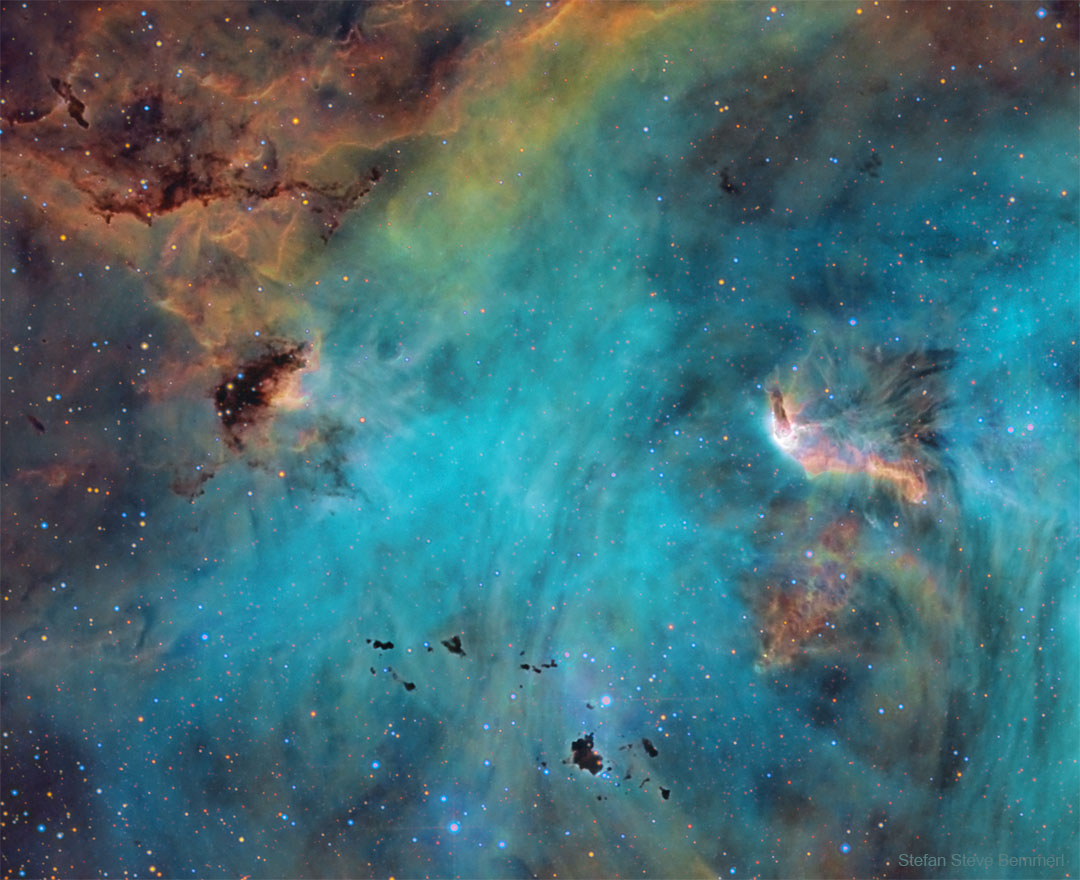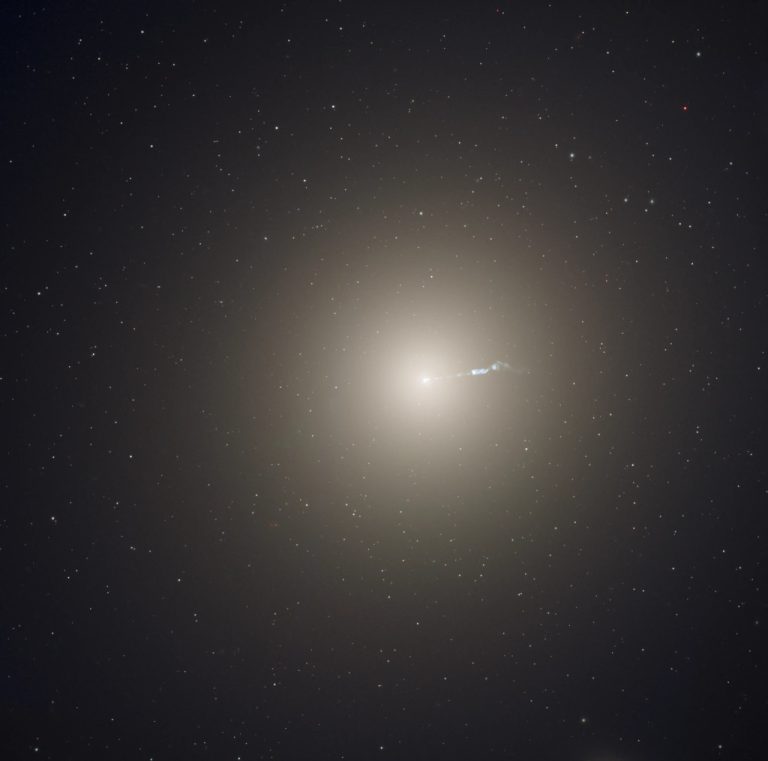2022年4月19日
Stars and Globules in the Running Chicken Nebula
Image Credit & Copyright: Stefan Steve Bemmerl
Explanation: The eggs from this gigantic chicken may form into stars. The featured emission nebula, shown in scientifically assigned colors, is cataloged as IC 2944 but known as the Running Chicken Nebula for the shape of its greater appearance. Seen toward the bottom of the image are small, dark molecular clouds rich in obscuring cosmic dust. Called Thackeray’s Globules for their discoverer, these “eggs” are potential sites for the gravitational condensation of new stars, although their fates are uncertain as they are also being rapidly eroded away by the intense radiation from nearby young stars. Together with patchy glowing gas and complex regions of reflecting dust, these massive and energetic stars form the open cluster Collinder 249. This gorgeous skyscape spans about 60 light-years at the nebula’s estimated 6,500 light-year distance.
Tomorrow’s picture: planetary bridge
奔鸡星云的恒星与云球
影像提供与版权: Stefan Steve Bemmerl
说明: 这头庞大鸡只的”蛋”或许会形成恒星。这幅影像以带有科学意涵色泽所呈现的发射星云,其编录号是IC 2944,此外也因其外观而有奔鸡星云的称号。在影像底端的小暗色分子云,则是富含会遮蔽星光的宇宙尘埃。这些因其发现者而名为萨克雷云球的天体,是可能会发生重力塌缩形成新恒星的”星蛋”,然而它们同时也受到邻近年轻恒星强烈辐射的快速侵蚀,因此命运未定。这些结块的辉光云气、纹理繁复的反射星云与大质量的活跃恒星,共同组成了疏散星团Collinder 249。这片壮丽的星空,以星云6,500光年的估计距离来换算,大约绵延了60光年。 (Running Chicken Nebula 奔鸡星云; Thackeray’s Globules 萨克雷云球)
明日的图片: planetary bridge







